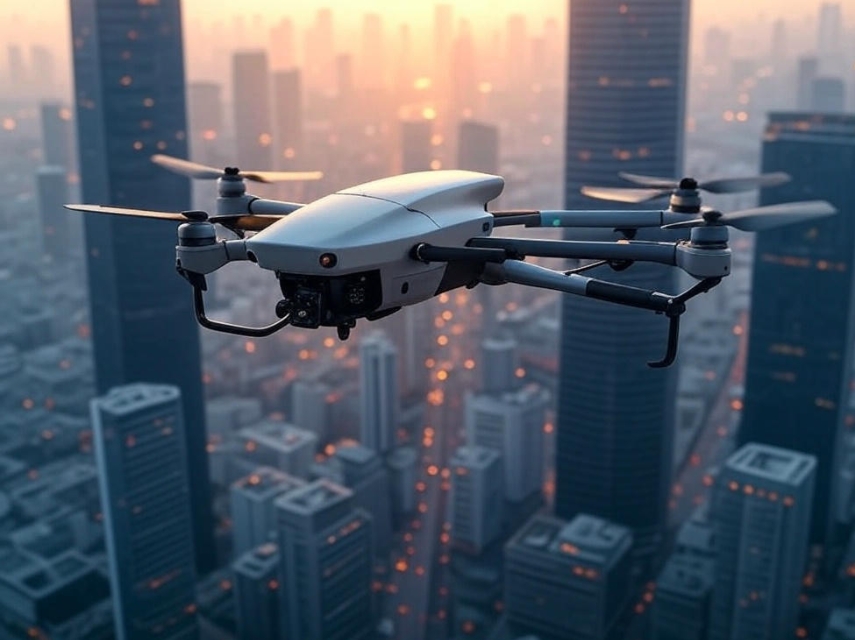As unmanned aerial vehicles (UAVs) evolve into critical tools across military, commercial, and emergency response sectors, the demand for high-resolution video, low-latency transmission, and on-board processing continues to grow. At the core of this technological leap are advanced UAV video encoders, particularly those supporting 4K encoding resolution and integrated AI edge capabilities. These components are redefining what UAVs can achieve in terms of real-time intelligence, surveillance, and situational awareness, enabling drone operators to gather more data, analyze it faster, and respond more effectively to dynamic conditions.
UAV video encoders are specialized devices that compress raw video captured by drone-mounted cameras into streamable formats, allowing for efficient transmission over wireless networks. As bandwidth is often limited in aerial operations—especially in beyond-line-of-sight (BLOS) scenarios—encoders must strike a fine balance between compression efficiency and image quality. With the emergence of 4K cameras on UAVs, the role of the encoder becomes even more critical. Ultra-high-definition (UHD) video provides clearer, more detailed imagery that enhances target recognition, terrain analysis, and threat detection, but it also generates significantly larger data volumes. This is where modern encoders using standards like H.265 (HEVC) become indispensable.

The H.265 codec offers up to 50% better compression than its predecessor, H.264, while maintaining the same level of video fidelity. For UAVs equipped with 4K cameras, this means high-resolution video can be streamed or recorded without overloading communication links or storage systems. Combined with features such as adaptive bitrate streaming, forward error correction, and support for multiple transmission protocols, these encoders ensure that video feeds remain stable and intelligible even in high-interference or bandwidth-constrained environments. This is particularly vital for defense, law enforcement, and disaster response missions where real-time video intelligence can determine the outcome of critical operations.
Beyond video compression and streaming, a growing trend in UAV systems is the integration of AI-powered edge computing directly into the encoder or camera payload. AI edge video solutions enable drones to process video locally, using machine learning models to perform tasks such as object detection, facial recognition, vehicle tracking, and anomaly detection—all in real time. This removes the need to transmit all raw video back to a ground station for analysis, reducing latency and bandwidth usage while enabling faster decision-making.
For example, a surveillance drone flying over a border zone can autonomously identify human movement, distinguish between authorized personnel and intruders, and send only relevant alerts or annotated video frames to operators. In search and rescue operations, drones equipped with AI-enabled encoders can detect signs of life, recognize human silhouettes amid debris, and prioritize areas of interest without constant operator intervention. In military operations, Artificial intelligence at the edge enables UAVs to recognize enemy assets, monitor troop movements, or support autonomous targeting systems while minimizing the risk of over-reliance on remote data centers that may be disrupted or compromised.
Integrating 4K encoding and AI edge processing into a single UAV platform, however, requires careful hardware and software design. The devices must be lightweight and energy-efficient to align with the strict SWaP (size, weight, and power) constraints of aerial systems. Advanced thermal management is necessary to prevent overheating during high processing loads, and the system must be rugged enough to withstand vibration, altitude changes, and temperature extremes. Additionally, robust cybersecurity measures are essential to protect the integrity of AI models and video data, particularly in military and high-risk civilian applications.
A number of companies are pushing the envelope in this space. VITEC, Haivision, and Soliton are known for delivering high-efficiency encoders tailored for UAV and mobile applications, while firms like NVIDIA, Qualcomm, and Intel are providing AI chipsets capable of running sophisticated edge inference tasks. These technologies are increasingly being used in concert, allowing drone manufacturers and integrators to develop systems that combine visual clarity, processing power, and autonomous intelligence into compact, mission-ready solutions.
As the capabilities of drones expand, the convergence of 4K video encoding and AI edge processing is setting the standard for the next generation of UAV platforms. These technologies are not just enhancing the way drones see the world—they are enabling them to understand and respond to it in real time. From battlefield reconnaissance to infrastructure inspection and environmental monitoring, UAVs equipped with these advanced encoders are poised to become more autonomous, more efficient, and far more impactful in a wide range of operational contexts.